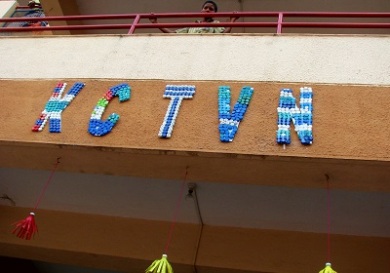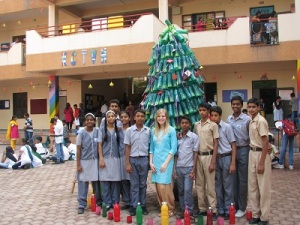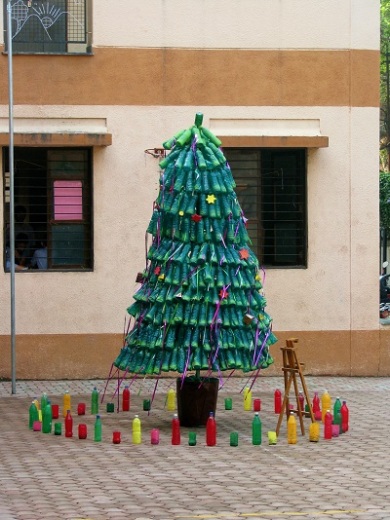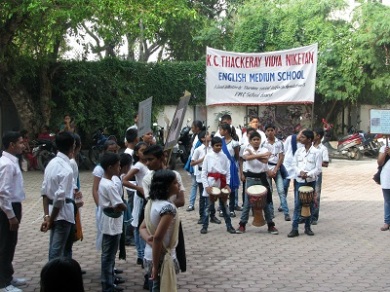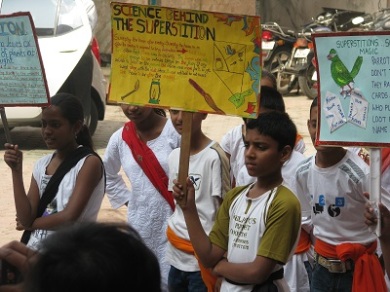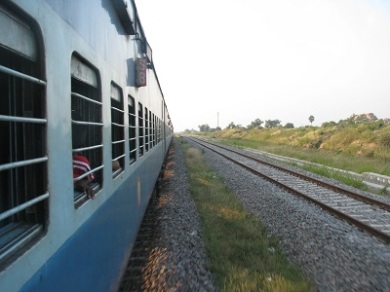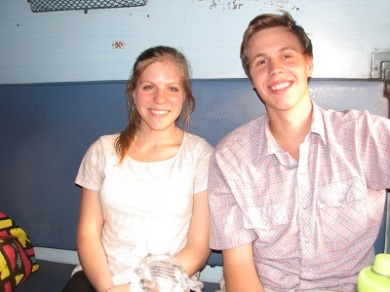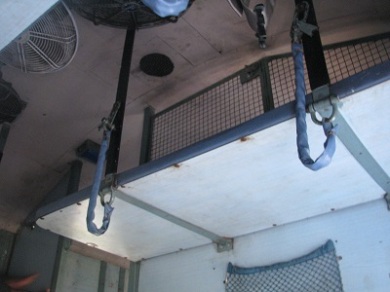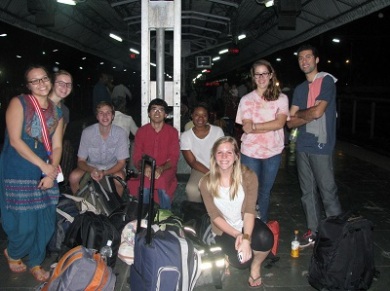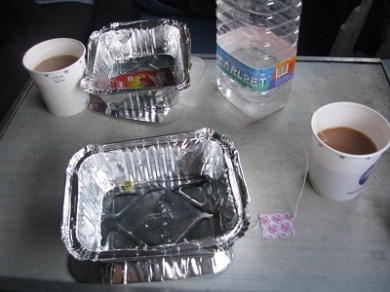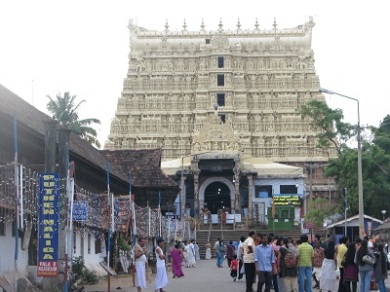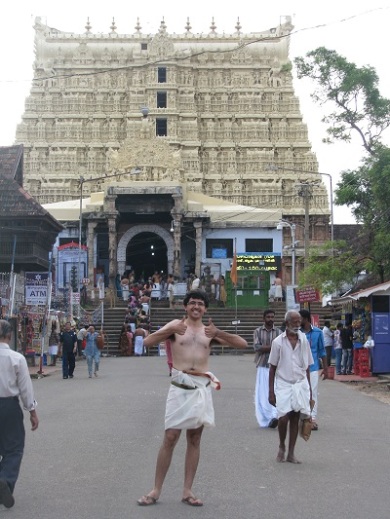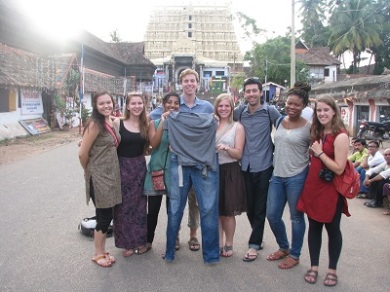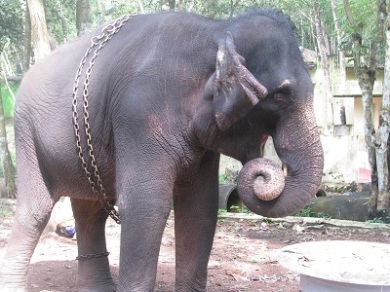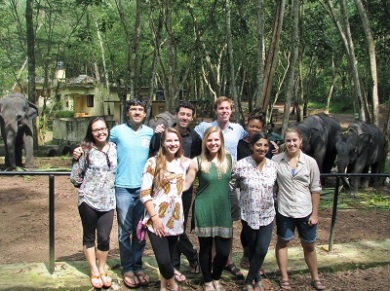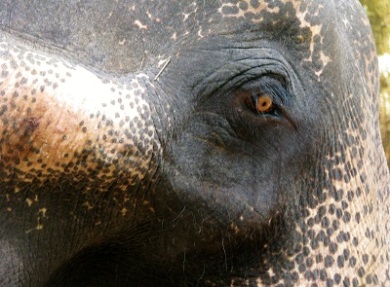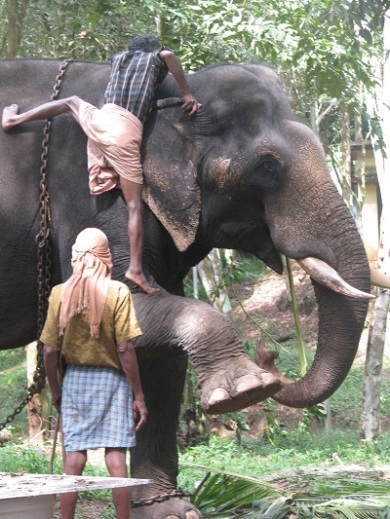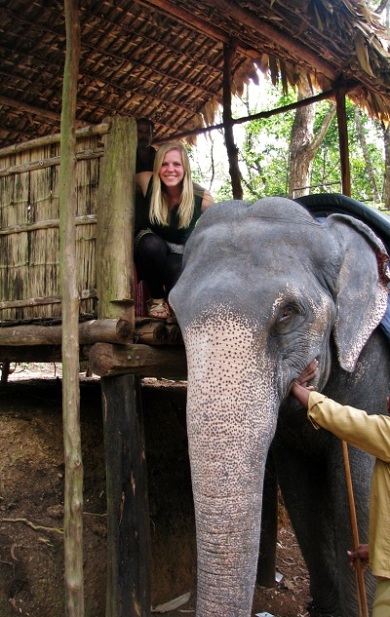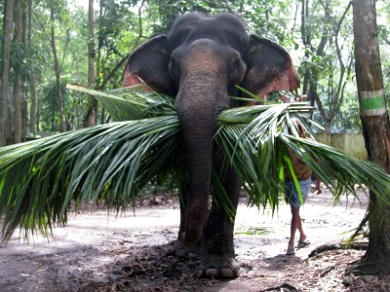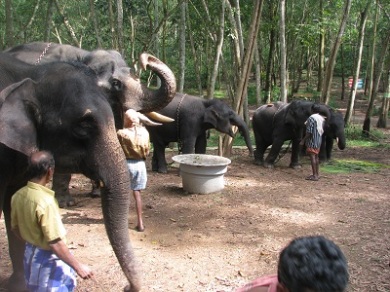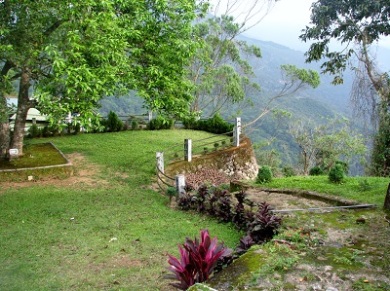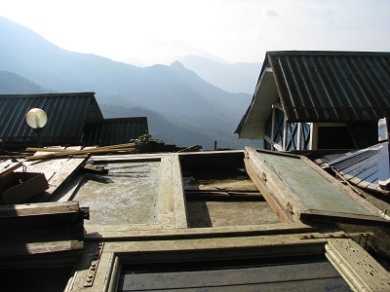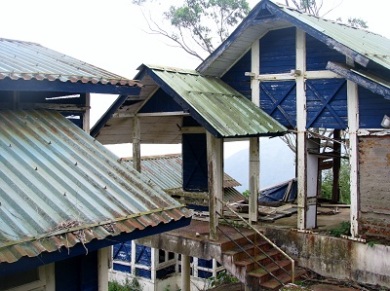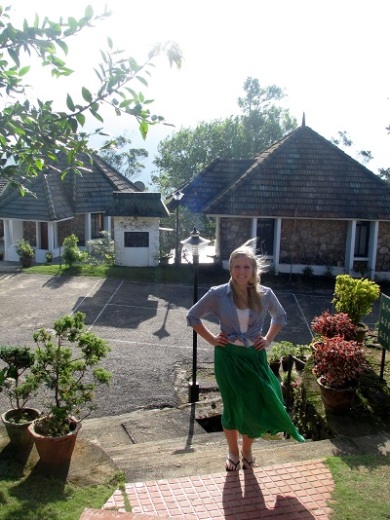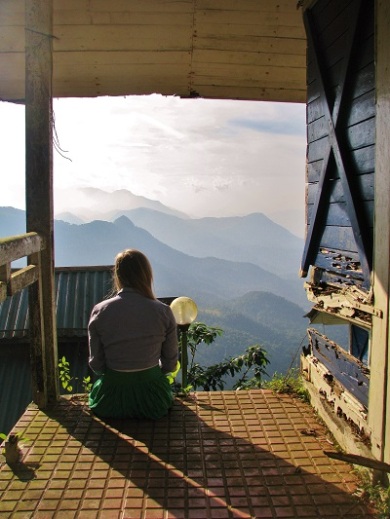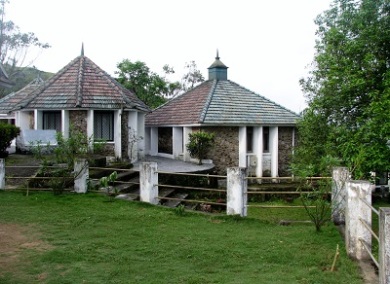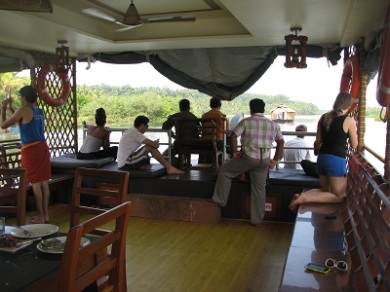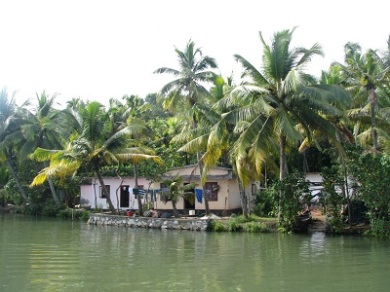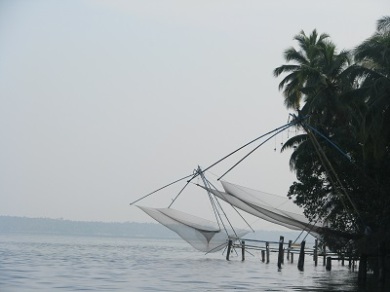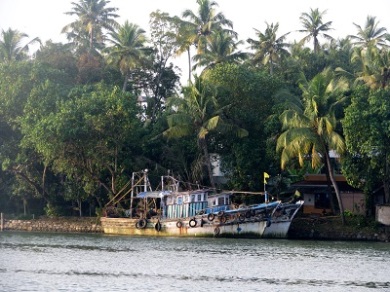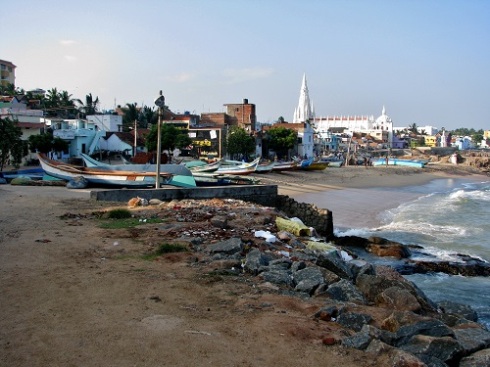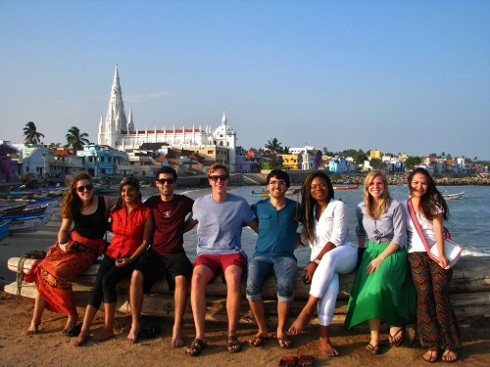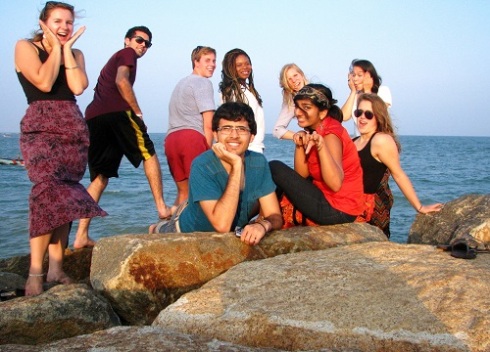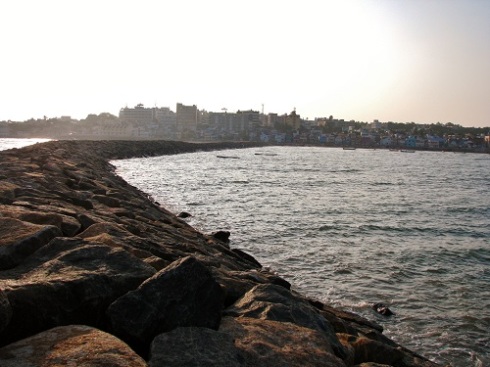As some of you may know, India welcomed to its heart and its markets my mother at the end of December. For 10 days my mom and I traveled, saw, and shopped more than I think (and hope) I will ever do again in 10 days!
Our trip began in Pune where my mom had a chance to meet my host mom, host family, and program staff and take her first rickshaw ride ever around my cozy little town. She tried idli, sambar, pani puri, SBDP, and sev puri all in one day- wow! My Aai made sure to feed her just as well as she has fed me this entire semester and was extremely welcoming to my jetlagged and excited mama.


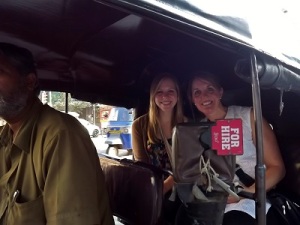
After our day in Pune we ventured to Mumbai where Mama tried her hand at street shopping. We had lunch at Café Mondegar (butter chicken, yum!) and then shopped the Colaba Causeway shopping strip, an iconic tourist destination. She picked up some beautiful scarves, knick knacks for her preschoolers at home, and some cheesy Indian tourist t-shirts that we just loved. Since she wasn’t used to bartering yet, we tag-teamed the shopping and while mom picked out the items, I bargained down the shopkeepers (some of which told me I must have been in India for a long time because I am sassy). It was a blast! After we wore ourselves out shopping we took a walk to the Gateway of India and Taj President Hotel. We finished off our evening with a dinner of chicken biryani, papad, and chicken tikka and then slept like princesses in one of the softest beds I’ve experienced in India.
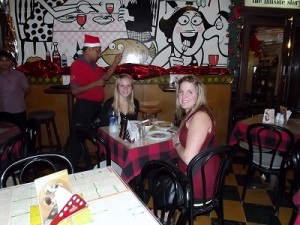
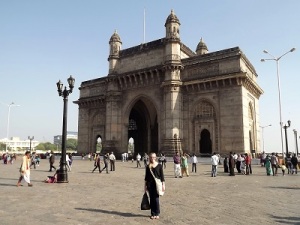

The next day we had breakfast at Candie’s Restaurant (one of my favorites featuring the only salad bar I’ve found in India), sampled sweets at an Indian sweet shop, wandered through a fruit market, and went shopping at a market on Linking Road. Mom picked up some kurtas, had a saree wrapped for the first time, and tried Natural’s ice cream, a must-have if you are visiting Maharashtra. We also had the chance to visit dhobi ghaat, a huge laundry washing center in Mumbai. We had a great day walking around together and ended the night with a quick visit to Mount Mary Catholic Church and drinks at the rooftop restaurant Dome Restaurant on Marine Drive, which overlooked the Queen’s Necklace on the Mumbai sea face.

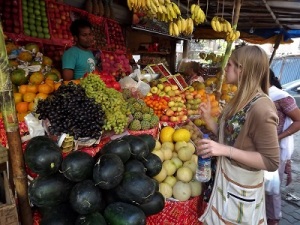
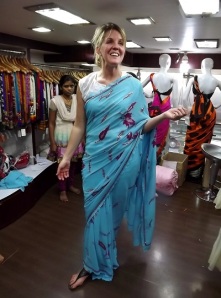
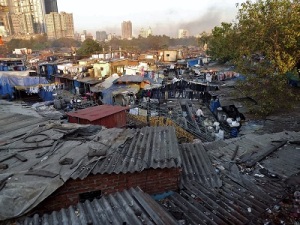

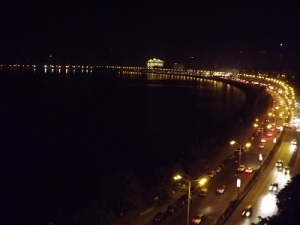

The following morning we took an early flight to Calcutta, the destination in India my mom had been waiting for since she was my age! We got extremely lucky with the location of our hostel (which left much to be desired and should really be called a convent) and had the chance to walk around Park Street, one of the main streets in the city. We visited the Mother House and saw many of Mother Teresa’s belongings, read her life story, and prayed at her tomb, which is located in the house. Her work was extremely inspiring and selfless and entering her house was a quiet, serene, peaceful break from the outside streets and alleys in which she served. On our way back to our hotel we ran across a man with two pet monkeys dressed in fancy clothes. He charged 20 rupees for a photo of the monkey pictured below, and wanted 20 more for the other monkey. Mom decided one photo was enough for the memory!
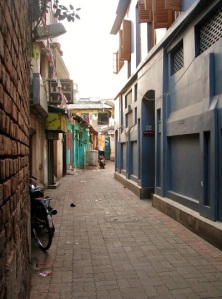
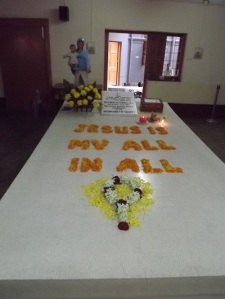
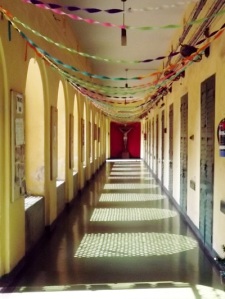
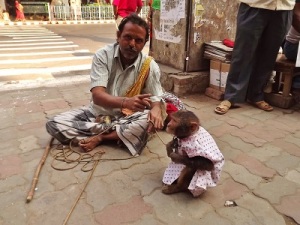
After visiting the Mother House my mom and I experienced what tops my list of never-do-again experiences: We rode in a man-powered rickshaw through alleyways. Essentially, our rickshaw was a narrow bench attached to two wheels and two wooden handles which were held by a man much thinner than me as he wheeled my mom and I through town. It was one of those things I wanted to do once, but once I did it was sure I would never do again. I was absolutely uncomfortable with a man pulling three or four times his weight while we were hooped and hollered at. Ah! A picture below shows our view from the rickshaw.
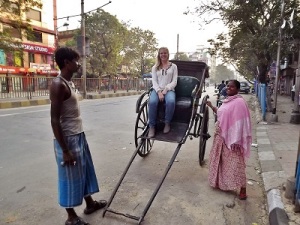

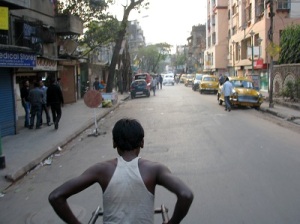
We spent our second day in Calcutta sightseeing. We first went to Victoria Memorial, a gorgeous building surrounded by beautiful gardens and ponds. We took a long walk around the grounds and mom photographed a lot of the stray dogs that were lounging around in the sun. We then took a taxi to Howrah Bridge, one of the busiest bridges in the world that features sidewalks on both sides and welcomes the feet of approximately 150,000 people a day. The bridge didn’t meet ours, however, as we zipped (crawled through traffic) over the bridge in our taxi. Next, we went to Kali Temple, which was on the outskirts of Calcutta. The ride to the temple was extremely hot but every bit worth it when we arrived. The temple was strikingly beautiful and featured stairs which led down to a river in which people who travel to the temple bathe. Monkeys dotted the premises of the temple and mom and I waited in a very confused line of Indians in order to bow at the idol’s mandal. We ended our afternoon shopping at New Market, a market packed with 2,000 stalls, way too many people, and persistent market staff members who follow you around in order to ensure you don’t leave. After a full day of exploring, bargaining, and shopping we headed back to our convent, showered (haha, look at the bathroom photos below), and ate KFC to feel at home.
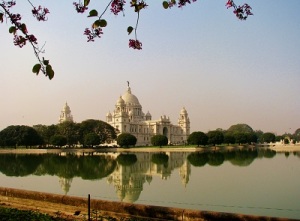
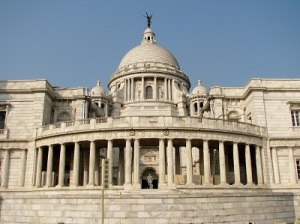
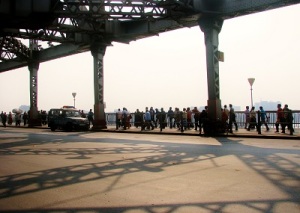


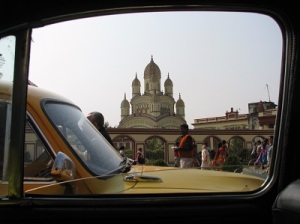


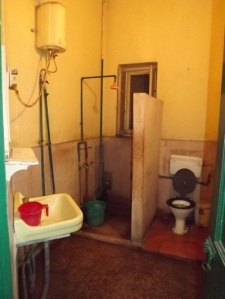
The following morning we took an early flight to Delhi. From Delhi we went to one of the sketchiest bus stations I’ve ever seen early in the morning to take a bus to Agra. We arrived in Agra early afternoon (on Christmas!) and ventured out to see one of the world’s seven wonders: The Taj Mahal. I don’t know why I assumed the Taj Mahal would be a serene and surreal experience- I guess because anyone who visits India has “that solo photo” of themselves with the Taj looming beautifully in the background. Visiting the Taj Mahal was intense, especially on the Christmas holiday! All along the entrance to the monument there are vendors- many of them children- begging for you to enter their shops. There are men telling you to follow them, people offering you their services as a tour guide, beggars asking you for money, people handing you pieces of paper with their products and services listed, and everyone giving you directions about where to go but no one agreeing on who should get to take you. Whew! Once we got through the hustle and bustle of the entrance gate, our next task was to take our cheesy tourist photo. This was a challenge! Many Indians that come to visit sites in India are also equally excited to see foreigners. I told my mom jokingly that we are just as exciting as the monkeys at Kali Temple. In many of our photos you can actually see children and men standing next to us posing for their own pictures in which we are (unwilling and uninformed) guest stars. Check out the kid below for an idea of what it was like. His dad congratulated him on getting a great shot! Haha.

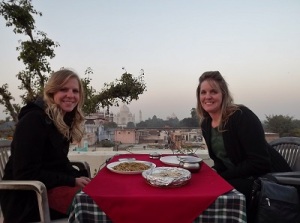

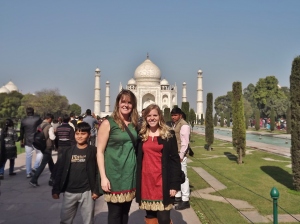
After seeing the Taj Mahal we went to the much less crowded and beautiful Agra Fort. Positioned on a hill overlooking the Taj, the Fort has beautiful orange-brown buildings and extremely detailed architecture that can only be explained in photographs, which I have included below.

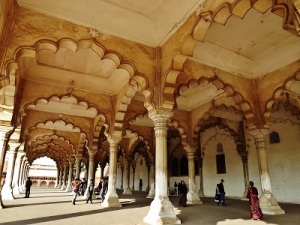
Our time in Agra was short but sweet, and we headed to Jaipur the following morning by bus. We arrived in Jaipur and made our way to Vinayak Guesthouse, a quaint and charming guesthouse inhabited by an extremely sweet and caring family. We hired a rickshaw to take us around for the day and went sightseeing at the watchtower in the center of Jaipur and the Monkey Temple at the Sun Gate of Jaipur. There were hundreds of monkeys lining the pathways of the temple! It was apparently birthing season, because lots of youngsters were trotting around and playfully fighting. It was amazing to be so close to these animals!


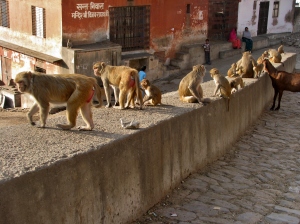
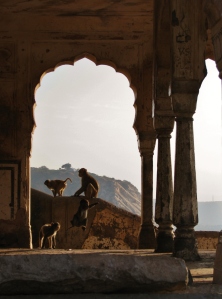

Mom fell ill on this night and we ended up calling a doctor to the hotel. To give you an idea of how medical practices differ in India, I’ll give you a short run-down of how the evening’s proceedings went:
- Doctor determines mom is dehydrated and prescribes an IV
- Doctor quotes price of INR6,000 for his services
- Mom and I bargain him down to INR4,000 (hey, this is India)
- Doctor asks me to hang a roll of gauze for him from the light fixture above the bed, which will serve as the IV stand for the night
- Doctor ties rubber cord around mom’s arm to find a vein and insert the needle
- Doctor proceeds to place 7 or 8 medicines in the IV fluids, which he coined as the “Medicine Cocktail” method
- Doctor instructs me to place hot water in a bucket and hold the IV cord into the water in order to heat the fluids before they enter mom’s bloodstream
- Mom takes multiple pictures of Dr. Gupta and we get nervous laughter from the experience
- Gupta finishes his work, removes the needle, and leaves without cleaning anything up!
The good news is that mom felt like a million bucks the next morning and we were able to press on with our travels! We met our rickshaw driver early in the morning and headed to the Amber Palace, which we reached by riding an elephant from the base of the palace to the main courtyard. Mom did this in style while wearing a turban which she purchased from a boy while sitting on the elephant’s back! On our way out of the Amber Palace we even got to see a live cobra being charmed by a man. After walking around the palace which was lined with intricately carved windows and walls we went to the Floating Palace, which sits in the middle of the water. It was exactly what it sounds like! We then finished our sightseeing with a visit to the tombs of the family which ruled Jaipur and mom had mehendi done in the parking lot of the tomb site. We spent the rest of the day shopping (Jaipur has some of the best jewelry, clothes, fabric, and handicraft shopping in the world!)
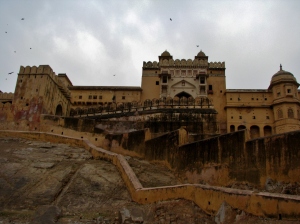
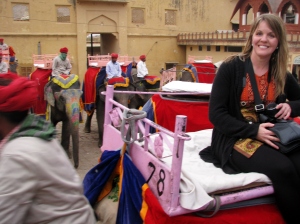

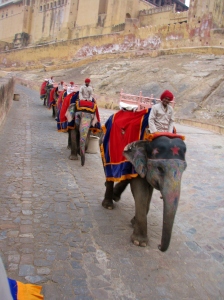
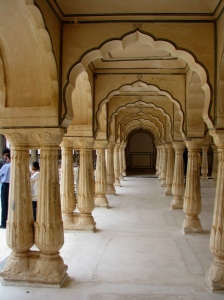
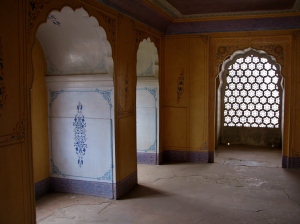
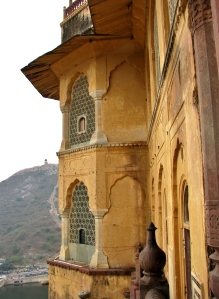


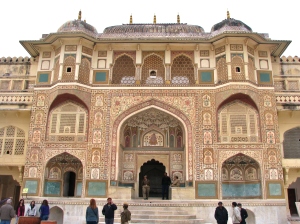
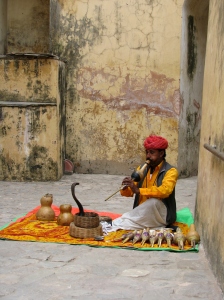
Our travels ended with our ride to Delhi, where I am studying for the semester. Mom wasn’t feeling well so the rest of our trip was spent recuperating under the careful care and watch of my cook, Ashok. With lots of chai, water, and rest mom started feeling much better and I started my semester in Delhi- the capital of the most beautiful country I’ve visited. It was so sad to say bye to mom at the airport- but I know I’ll be home soon! My visa expires in the end of June, so it seems that I have no choice but to be back in the US in less than 6 months- so I’ll see you soon Mom! And everyone else, too. Come visit me in India!























































